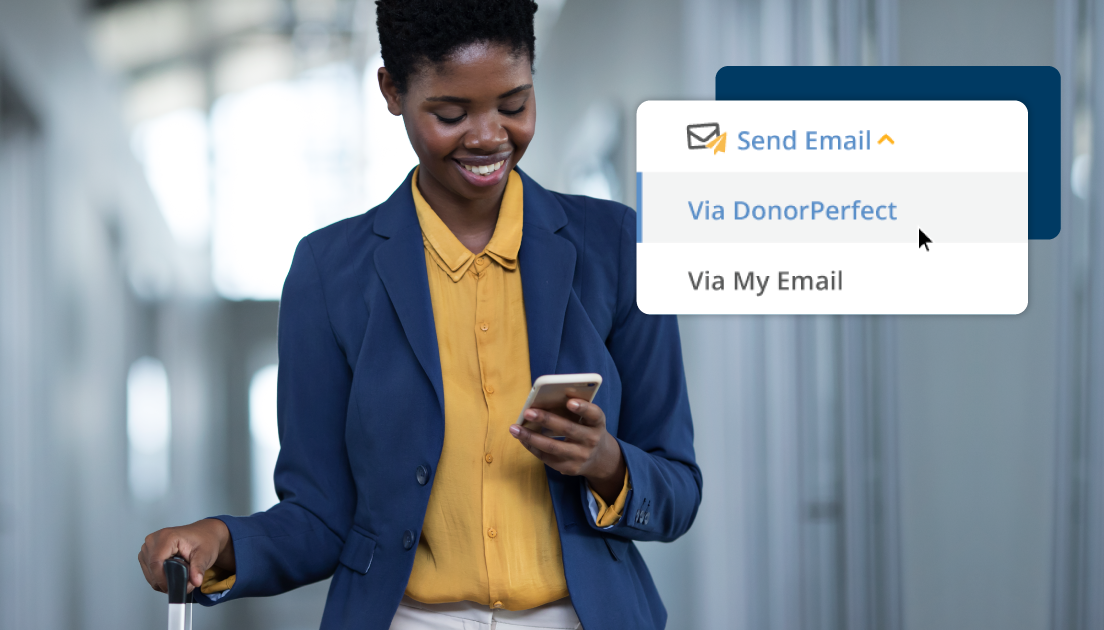Nonprofit Technology & Fundraising Blog
Subscribe to our mailing list

March 14, 2022 | Fundraising Communication
Successful email marketing engages your entire community by activating new supporters, advocating for your cause, and thanking donors for their generosity – and it all starts with your donor engagement tools. With the help of your nonprofit CRM, sending “expert level” email engagements is much easier than you might think.
Let’s get into the core aspects of nonprofit email marketing, and how to reach expert level in each.
Today’s donors want to feel connected to your cause, so it’s important to maintain continuity when cultivating and stewarding donor relationships. When your communications are in one central location, they can be properly tracked and analyzed to reveal trends and provide insight into the messages that motivate donors to give.
That said, you probably know at least one person within your organization who occasionally sends emails from their preferred email application instead of your CRM. If your staff is sending emails from different places, it can cause confusion for both donors and employees, especially when dealing with turnover. Not to mention, does anybody really enjoy switching back and forth between accounts to get the information they need? Security issues could also arise. The risk far outweighs the perceived convenience. That’s why, in this cloud-based day and age, all of your donor outreach should live and breathe in the same database.
You wouldn’t ask an inactive donor to join your monthly giving program if they haven’t contributed in years, and you wouldn’t send your volunteer an invite for the event they’re already working… but with gifts to record, emails to send, and donors to engage, wires can easily get crossed.
Segmenting your email lists keeps communications relevant to prevent lapsed donors and unsubscribers. It’s also proven to increase click-through and email open rates significantly. Donors can be grouped by geographical location, how much they give, how recently they gave, which campaigns they have given to, and more.
To start, try segmenting your donors by recency, frequency, and gift amount to create email groups. For example, if grouping by giving level ($0-50, $50-$100, and so on), you can email each group with a targeted appeal, like an online donation form with a default amount that matches their giving history.
Each donor is interested in different aspects of your work, and aside from speaking with them directly, the best way to determine their interests is through their history with your organization – events they’ve attended, projects they’ve supported, survey responses, etc. Through CRM features like analytics dashboards and reporting filters, you can get a bird’s-eye view of your data to identify trends.
Reporting on donors’ giving history also presents the opportunity to single out the people who give the most, so you can secure funds for future projects. Use this information to invite frequent donors to join a monthly giving program, or ask major donors to help with a matching gift campaign.
Different groups respond to different messaging, but you don’t have to rewrite the entire email for each segment. Consider changing the sender, subject line, call to action or delivery time, as these four components have the highest impact on open and click-through rates. If sending an email to a major donor, perhaps it should come from your director, and the subject line should thank them for their commitment to your mission.
When integrated with your CRM, your online donation forms can sync the information you’ve collected (like gift amount, giving level, and giving history) with your donor records. Once you have that information flowing into your database – without any manual entry – you can use it to personalize each email you send out, and to know which solicitation they should receive.
For further insight into your donor relationships, you can include giving options on your online donation form, like recurring, monthly, and split gifts. These details will be automatically added to your donor records, showing how each donor likes to give.
Create donation forms specific to each campaign instead of using one catch-all form to know for sure how successful each one has been – and ultimately boost your email conversion rate. The goal of each campaign should relate to at least one segmented group.
At the end of a campaign, reporting features within your nonprofit CRM will reveal your form conversion rate and email open rate, or in other words, how many of your form visitors actually made a donation, and which email was opened the most. These rates will depend on how well your message resonated with those it reached.
Finally, you’ll want to measure the efficacy of your email campaign to see how it has performed compared to past ones, and what to do differently next time. Remember, an audit isn’t about downsizing, it’s about making sure your messages resonate with your supporters.
When all is said and done, meet with your team to compare metrics, gather feedback, and brainstorm new ideas. Walk through the process in your donors’ shoes. If you’re skimming through information to speed up the process, there may be room for improvement. Do you receive a receipt and a thank you right away? Are you receiving too many emails? Do you find yourself spending excessive screen time? Do your emails have a clear goal and call to action? These considerations will help you get closer to increasing email conversions.
Follow us on social!